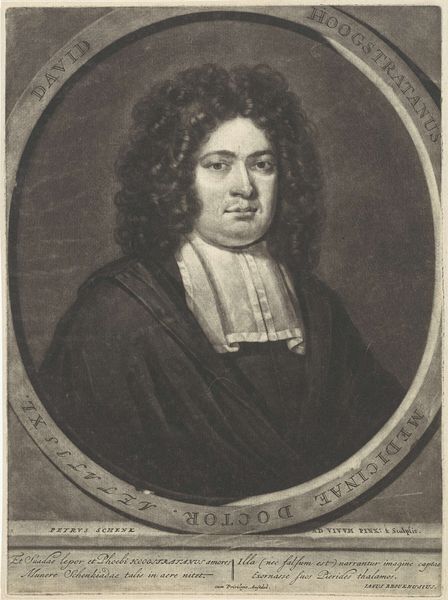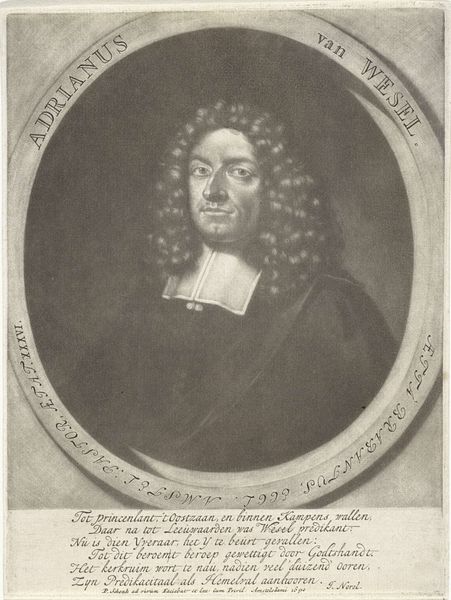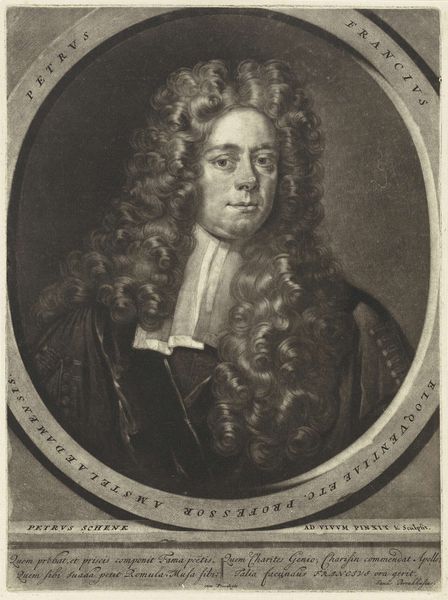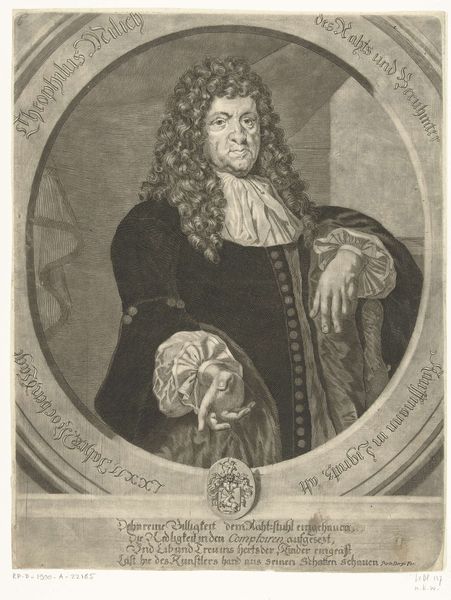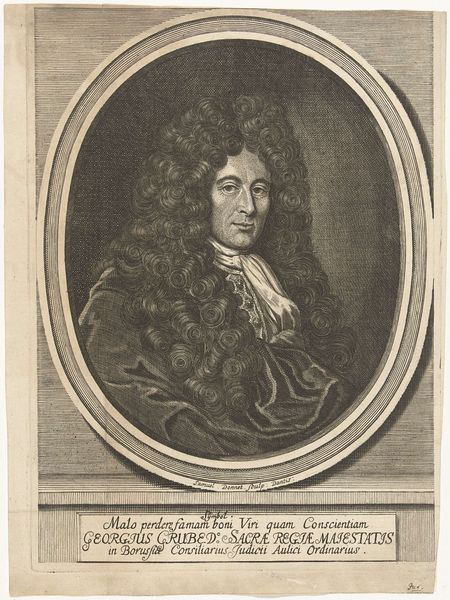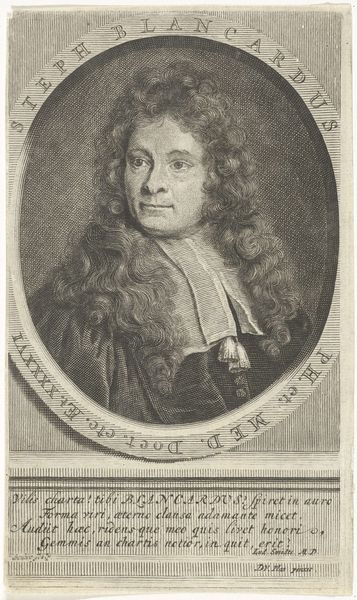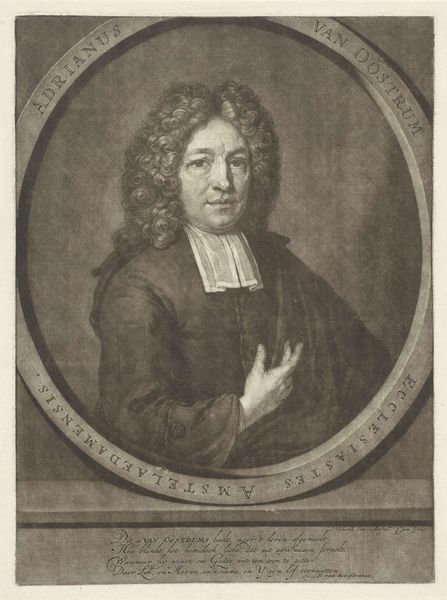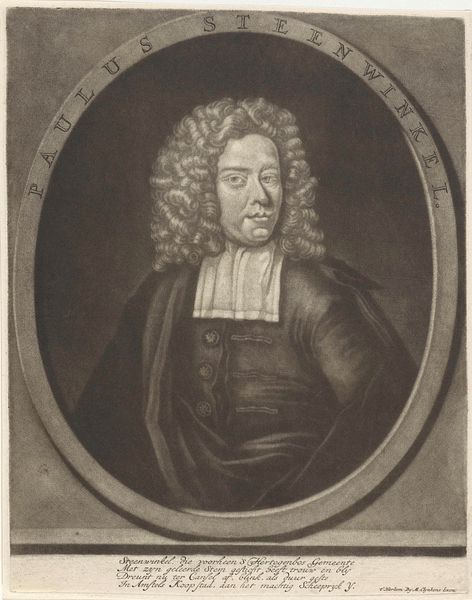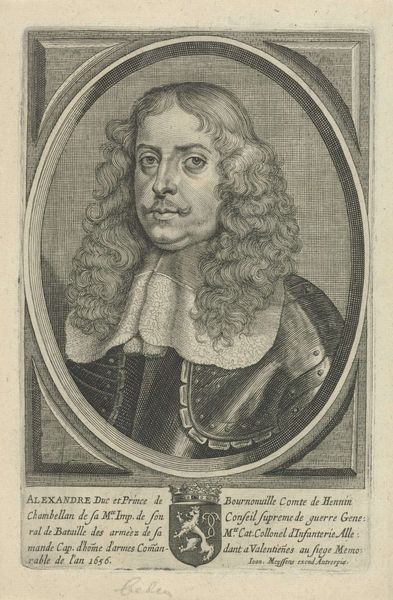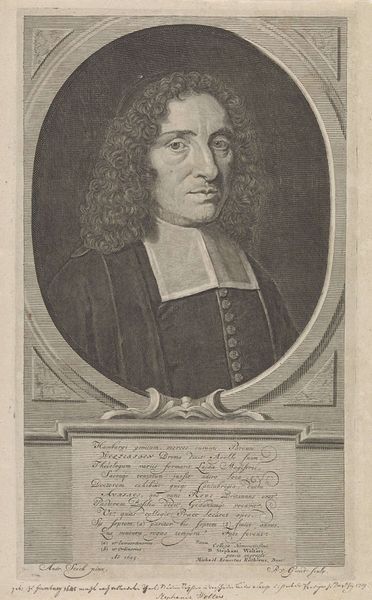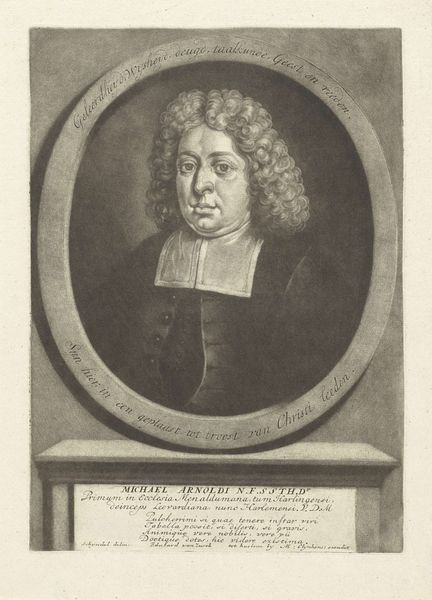
drawing, print, engraving
#
portrait
#
drawing
#
baroque
#
dutch-golden-age
# print
#
engraving
Dimensions: height 137 mm, width 94 mm
Copyright: Rijks Museum: Open Domain
Editor: Here we have a print titled "Portret van David Fransz. van Hoogstraten," created sometime between 1670 and 1713 by Pieter Schenk. It's a very formal portrait, quite serious and imposing. What’s your interpretation of it, considering the historical context? Curator: This print offers a window into the social landscape of the Dutch Golden Age, where portraiture served less as mere likeness and more as a marker of status. Consider Hoogstraten's profession—"Doctor Medicinae" as the inscription proudly states—and the societal weight physicians carried. The print becomes a declaration of belonging to an educated, influential elite. Editor: So, the act of commissioning the portrait itself communicates something? Curator: Absolutely. Think about who was commissioning these prints and for what purpose. Was it personal pride? Perhaps political maneuverings through visibility and social networking? Or a way to preserve legacy in the family. Editor: I see your point. The way he's positioned, framed in this oval with inscriptions surrounding him, makes it seem very intentional. It's not just a portrait; it's a constructed image of a respectable figure. How do you think the style relates to its social meaning? Curator: The baroque elements - like the flowing wig and elaborate framing, contribute to the overall grandeur. The artist uses the established artistic conventions to elevate the subject's position. Do you think the print medium had any influence on its public function? Editor: Well, being a print, it could be reproduced, so wider circulation was possible. Did this mean accessibility to a larger audience or more targeted distribution? Curator: Exactly! The circulation of these prints tells us much about the strategies through which elites were using art to shape the social fabric of the era. These images moved beyond personal display; they engaged in a public dialogue about who held power and deserved recognition. Editor: That gives me a whole new perspective on understanding portraiture! It's not just about capturing someone's face, but about power, access, and how an individual situates themselves within their social sphere. Curator: Precisely! Understanding the history of image-making within its social structures gives the artwork new layers of meaning.
Comments
No comments
Be the first to comment and join the conversation on the ultimate creative platform.
